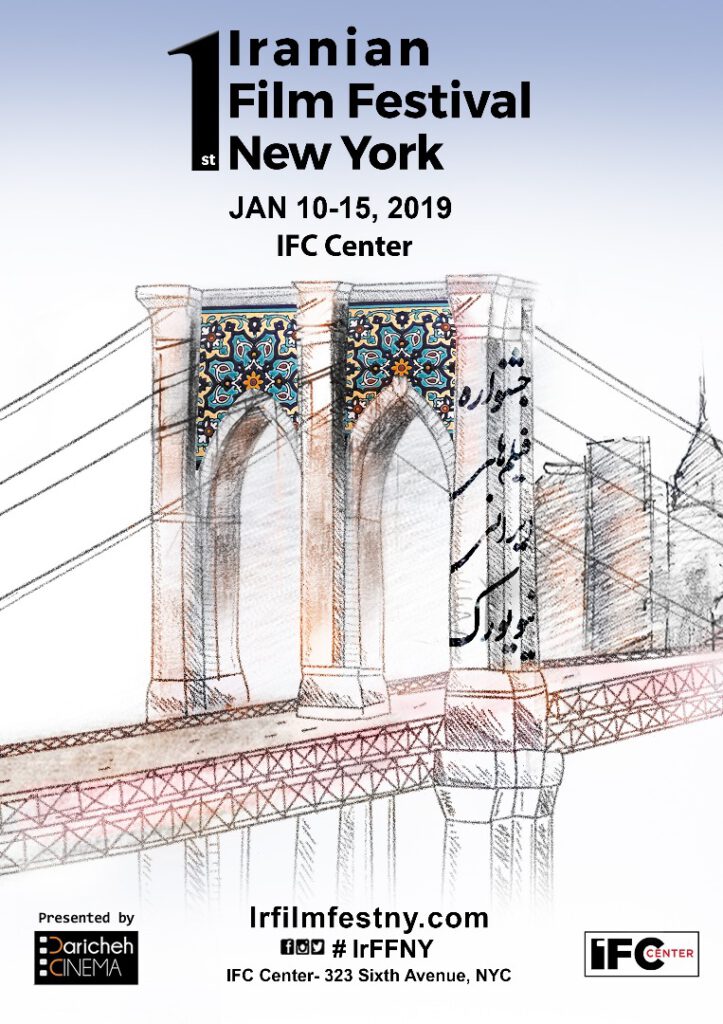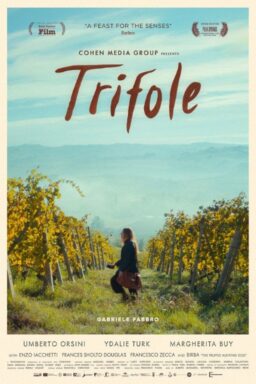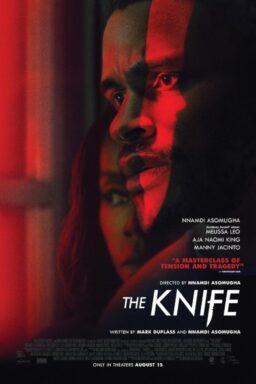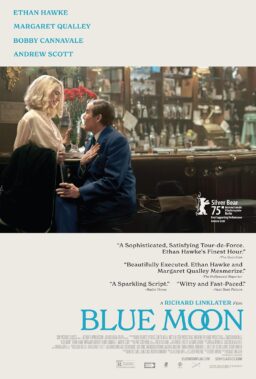For a period of about five years in the late ‘90s and early 2000s, Americans had a chance to see Iranian films regularly at arthouses and festivals. That dropped off quickly, with the nation’s cinema getting reduced to Abbas Kiarostami and Jafar Panahi (if we thought about it at all). Asghar Farhadi’s 2011 “A Separation” became the most popular Iranian film ever made, grossing seven million dollars in the U.S. and winning the Best Foreign-Language Film Oscar, but it didn’t open doors for his compatriots, although Farhadi himself won a second Oscar and has remained an arthouse fixture. While Mehrdad Oskouei’s documentary “Starless Dreams” ranks with the best Iranian films of the past decade, it got a minimal American release despite a lengthy tour of the international festival circuit, where it won 21 awards.
North American cities like Chicago and Toronto have ongoing annual Iranian film festivals. In New York, RogerEbert.com contributor Godfrey Cheshire and Armin Miladi, who operates the distributor Daricheh Cinema and has programmed an Iranian film festival in Sydney for eight years, have launched an equivalent series at the IFC Center. It runs from January 10th to the 15th.
The festival kicks off with Bahman Farmanara’s “Tale of the Sea,” and also includes his 2014 “I Want To Dance,” whose screenings were held up by Iranian censors till last year, and 1979 “Tall Shadows of the Wind.” The late Kiarostami’s shadow hangs over it. “Tale of the Sea” is dedicated to him (Farmanara produced his second feature, “The Report”). It features Panahi’s “3 Faces,” which pays extended homage to many elements of his style, and the documentary “76 Minutes and 15 Seconds With Abbas Kiarostami,” accompanied by his final short “Take Me Home.”
Cheshire says “I’m excited about starting the festival right now because there have been new developments and talents emerging in Iranian cinema recently that I think New York cinephiles who know the films of Kiarostami, Mohsen Makhmalbaf, Farhadi et al. will find really fascinating. In effect, a primary goal Armin and I have is to link the work of previous generations with younger talents like Mani Haghighi, Abbas Amini, Houman Seyyedi and Asghar Yousefinejad.”

In “Tale of the Sea,” Farmanara plays Taher, a writer who has just been released from a mental hospital into the care of his wife Jaleh (Fatemeh Motamed-Arya), who wants to divorce him because he’s so difficult to live with. But for now, they live in a house on a beach, where he meets with friends, a former student turned activist (Saber Adar) and, eventually, his long-lost daughter Parvaneh (Leila Hatami). “Tale of the Sea” establishes a somber mood with deliberate pacing, a minor-key orchestral score and Farshad Mohammadi’s muted, blue-toned cinematography. The film consists of one-on-one conversations, and for its first hour, Taher participates in all of them, although the audience learns that he’s an unreliable narrator. It may as well be divided into three acts with on-screen titles, with the final half hour developing far more storytelling momentum. “Tale of the Sea” works best when it cares more about gradually exploring Taher’s life than building a narrative out of it. Still, its echoes of Bergman and Chekhov add up to a moving reflection on aging and mortality.
Mani Haghighi’s “Pig” generated some buzz at last year’s Berlin Film Festival, and its reflexive look at filmmaking evokes a far more juvenile take on “8 ½.” While it feels distantly inspired by the way Jafar Panahi’s reputation rose after his arrest, it comes across only slightly more mature than its anti-hero, Hassan (Hasan Manjuli). He’s a 50-year-old director who has been blacklisted. His home looks like a man-cave, with a huge poster of AC/DC guitarist Angus Young on the wall, and he relies on the women on his life to stay grounded while cheating on his wife Goli (Lili Rashidi) with a beautiful actress (Hatami). The Iranian film industry is being attacked by a serial killer who decapitates directors – including “Mani Haghighi” – and carves the word “pig” on their heads.
Aided by the great cinematographer Mahmoud Kalari, Haghighi achieves a distinctive look, using bright, stylized colors. “Pig” departs from naturalism by venturing into surreal dream sequences and gory shootings. In one especially memorable scene, Hassan nods out in a police station and imagines himself singing new lyrics to the tune of AC/DC’s “Hells Bells” backed by an all-female band wearing devil’s outfits. But the film mostly expresses a free-floating anxiety that doesn’t resonate when its protagonist is such a jerk. As hard as it tries to satirize a mid-life crisis, its attempts at wit fall flat, and the potshots at social media and commentary on Iranian cinema are tepid. “Pig” works best as a character study of a man who’s never been pressed to grow up.

The premise of Abbas Amini’s “Hendi and Hormoz” could be a wallow in poverty-porn: 13-year-old Hendi (Zohreh Eslami) marries 16-year-old Hormoz (Hamed Alipour), who can’t find legal work to support them after he gets her pregnant. However, Amini pays careful attention to the teenage couple’s surroundings: the film evocatively captures the red dust and pale green leaves of its desolate and beautiful island. And Hendi and Hormoz comes across as individuals, not types. Forced into an arranged marriage, they become intimate while barely knowing each other, Eslami’s performance conveying the way her character has grown up too fast. She brings across a sense of trying to stand by Hormoz without fully understanding what he has to go through to get by in their everyday lives. Satyajit Ray’s “Pather Panchali” hangs over the film, but closer to home, Oskouei’s bleak documentaries about island life seem like an inspiration, although they’re even blunter about the pressures imposed upon women.
Like numerous gangster films, Houman Seyyedi’s “Sheeple” suggests that crime doesn’t pay and will land you in jail, but the road to get there can be pretty exciting. As Shahin, a drug dealer who works under the thumb of his older brother Shakur (Farhad Aslani), Navid Mohammadzadeh chews the scenery, and then some. The film’s opening and closing scenes, as well as its English-language title, suggest a subtext about how power plays out that it does live up to, but through concentrating more on the pathos of family life as on the workings of the drug trade. Shahin and Shakur were raised by an opium addict, who left a permanent scar with a hot soda bottle on his forehead which he styles his hair to hide. In turn, Shahin takes his anger out on his sister Mona (Marjan Etefaghian). He disapproves of her job as a hair stylist and really goes postal when a video of her sitting in a car with a man and taking off her scarf to show him her ponytail winds up on-line. The film obviously gets a kick out of Shahin’s macho posturing, as does Mohammadzadeh. It stages a few stylized and bloody action scenes. However, by the time the film ends, he seems like a 30-year-old boy whose rage is expressed constantly but gets him nowhere: the consequences of his actions are definitely felt. “Sheeple” synthesizes tropes derived from American genre cinema with an anger and urgency reminiscent of the films Makhmalbaf made in the late ‘80s.
Find out more about the festival and get your tickets here












